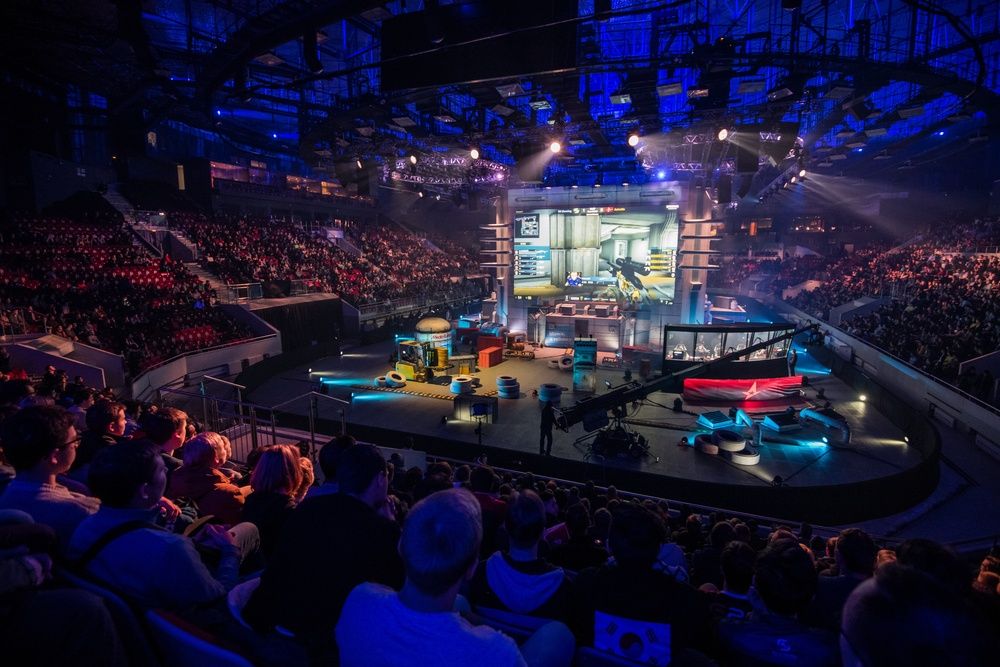Universities Can’t Upgrade Networks Fast Enough as Collegiate eSports Take Off
University IT departments must take steps to bolster their campus networks as collegiate eSports become increasingly popular. On October 19, 2014,...
4 min read
Tony Ridzyowski : Aug 24, 2022 11:27:52 AM

Esports are more popular than ever in schools, but gamers need more than just quality monitors and graphic cards to succeed. They also need robust networks with sufficient bandwidth.
Over the last few years, esports have become increasingly popular — not to mention profitable. In 2017, the global esports market was valued at $493 million. Last year, the market’s value reached over $1 billion, and it’s expected to hit $2.8 billion by 2028. Even back in 2014, millions of people were already streaming esports. Over 27 million people watched the final League of Legends World Championship match online that year. To put that into perspective, only 18.1 million people tuned in for the 2022 NCAA Men’s Basketball Final.
While the players in that championship were professionals, esports aren’t just for people who have devoted their lives to gaming — they’re also becoming increasingly popular in schools. Since about 90% of today’s teens play video games, it’s no surprise that many students play competitively. Colleges have gotten in on the craze in recent years with schools like Boise State University and the University of California, Irvine supporting varsity esports teams. And esports are just as prevalent in high schools around the country.
The explosion in the popularity of competitive gaming has not only reshaped the way we think about sports and video games but has also created new challenges for the higher education institutions and high schools looking to support the trend. The fact is, robust networks aren’t optional for schools that want to support gamers during play. Read on to learn more about the rise of esports and the critical importance of strong internet connections for schools with teams.
While U.S. colleges hosted regattas and football games as far back as the 1800s, collegiate esports only got their start in 2014 when Robert Morris University Illinois established the first varsity esports team. From there, esports spread like wildfire through higher education. While just seven colleges and universities were home to varsity esports programs in July of 2016, 63 institutions had varsity esports by 2018, and by 2020, that number had risen to more than 170 schools.
Today, many higher education institutions offer scholarships worth thousands of dollars to attract top gamers, which has led high schools across the country to follow the universities’ lead and establish video gaming teams of their own. However, scholarships aren’t the only thing on the table for players. They can also earn high salaries, tournament money, insurance, and even 401(k) plans as competitive gamers. They can also launch life-long careers in the esports industry and transition to other roles, such as coaching, marketing, or business management, after establishing themselves as top players.
If that weren’t enough to convince schools that esports are worthwhile, the similarities between esports and traditional sports make another compelling argument. Esports teams have tryouts and daily practices, they take part in regional and state tournaments, and participation offers many of the same benefits that come with being on any team. Esports players must practice, strategize, and work together to succeed. More importantly, like with any sport, esports help players learn how to work together, communicate with one another, overcome failure, and cope with stress. Esports also help players develop their leadership, time management, and strategic and critical thinking skills while instilling a sense of school pride and community.
With so many benefits, it’s no surprise that high schools and universities are embracing esports and offering new avenues to success for students who may not be interested in standard sports. However, in order to maximize those benefits, schools need one key feature that isn’t necessary in traditional sports: a powerful internet connection.
High school and university esports teams alike need more than just gaming computers, graphic cards, headphones, and keyboards to succeed. They also require reliable, fast bandwidth that will keep them in the competition. After all, nothing’s worse than experiencing latency issues and lags in the middle of a tournament — especially if they cost the team a win.
According to the Federal Communications Commission, you’ll need a bandwidth of 3Mbps for online games like Fortnite and 4Mbps for online multiplayer games like Call of Duty. Of course, more players and devices require more bandwidth, so having the proper setup and internet speeds for your specific team dynamic are essential.
While a WiFi connection is fine for recreational gaming at home, hard-wiring consoles to the network is best for competitive esports. Devices connected via ethernet experience fewer fluctuations than those connected via WiFi, making wiring the more reliable option for teams looking to get as much bandwidth as possible. So, just as esports teams need skilled players and supportive coaches, they also need an IT team that can carefully design and maintain their network and provide high-throughput, low-latency connectivity that puts all players on equal footing.
High schools and colleges are racing to get more switches and capacity to keep up with gaming bandwidth demands, but many can’t get the upgrades they need on their own. After all, success means juggling a lot of different services and data. In addition to having sufficient bandwidth, the schools also need to analyze network traffic, monitor all their applications’ and devices’ performance, stay on top of software updates and patches, and monitor general network security. With all of this on their plate, school IT teams often struggle to ensure their network is designed correctly, segmented properly, and running optimally to deliver uninterrupted gaming. That’s why many schools are looking beyond their campuses and partnering with experienced providers for help managing their esports networks.
Esports are increasing in popularity at a meteoric rate in high schools and colleges, but not all esports teams have the support they need. Teams whose institutions aren’t equipped with the fast, reliable connectivity required for gaming may lose to the competition due to factors out of their control, such as lag. However, with high-throughput, low-latency connectivity, esports teams can thrive.
The best way to get and maintain that connectivity is by partnering with Turn-key Technologies, Inc. (TTI). Our experts are prepared to work with you to ensure your network is equipped to support competitive gaming. With over 30 years of experience behind us, we have the expertise to prepare your network for the esports revolution and provide gamers with the connectivity they need, allowing them to focus on beating their opponents rather than combatting in-game lag.
Speak with our team today to discover how TTI can help you provide the connectivity your esports players need!

University IT departments must take steps to bolster their campus networks as collegiate eSports become increasingly popular. On October 19, 2014,...

These five trends will redefine campus networking in 2019. A university campus is one of the most interesting environments in which to watch new...

There’s no denying that a strong campus WiFi network is critical in terms of attracting and retaining students in higher education. You’re dealing...